Nowruz is the combination of two words: No meaning “New” and Rouz meaning “Day”. Together they translate to ‘A New Day’ in Persian, marking the first day of Farvardin (the first month of the Persian solar calendar) and consequently the Persian New Year.
History of Nowruz
According to Persian mythology, Jamshid, the great mythical Persian king, takes credit for the foundation of Nowruz. During his reign, Jamshid defeats the evil demons and takes them as his servants capturing their jewels. The world, devastated from his battle with the demons had turned into a dark place with no life or vegetation. Jamshid orders the demons to build him a throne of jewels where he sits as the world ruler. As the sun hits the jewels of his throne, light conquers the world. Life comes back to earth and people gather around him proclaiming the day as Nowruz!
Celebrating Persian New Year
Today Nowruz is celebrated by millions around the world and countries of Iran, Afghanistan, Azerbaijan, Georgia, Albania, Iraqi Kurdistan, Kazakhstan, Tajikistan, Turkmenistan, Uzbekistan, Kyrgyzstan, and Kosovo call it a public holiday.
On a more personal context, Nowruz for me was getting rid of school for 13 days, painting eggs with my brother, visiting lots of family members and eating way too many nuts and sweets! And of course, competing with my cousins in receiving the most Eidi (money given to children or even adults as gifts from the elderly). This was practically the only motivation in visiting my extended family during the holidays going as far as the uncle and aunts of my parents. Booooring!
As we got older, we had a good idea of every uncle and aunts level of generosity and would make excuses in visiting the stingy ones. Being the oldest one of 3 grandchildren from my father’s side, I would always have a great head start receiving a big note from my paternal grandpa. On my mother’s side, however, the Eidi was given to 10 grandchildren and even the adults. So not really much to rely on.
Today, Nowruz still holds a great place in my heart and it’s both mine and Parsa’s favourite celebration of the year. We even got married during Nowruz. You can read all about our wedding story here. 😉
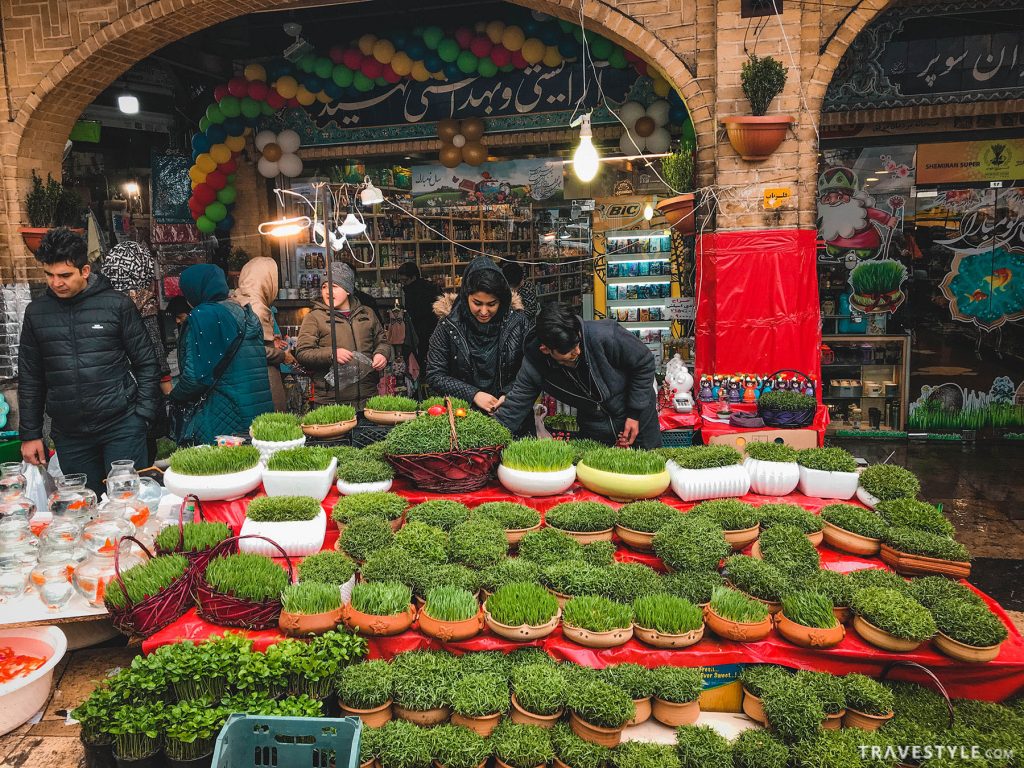
Preparing for Nowruz in Iran
When is the Persian New Year?
We celebrate Nowruz on the exact second of the vernal equinox (when the day and night are of equal length). It’s is usually between March 20th and 21st. So there’s no specific new year eve celebration as it can happen any time of the day.
The date of the first celebration of Nowruz is unclear to historians. There was no mention of it until the Persian records of 2nd century AD, although it is believed to have been celebrated much longer than that.
Though Nowruz is celebrated by people of all faiths and in locations as far as the Balkans, much of its Iranian traditions have routes in Zoroastrianism (an ancient monotheistic religion with followers in India and Iran).
Nowruz traditions:
Khooneh Tekooni | Spring cleaning
No Nowruz can begin without a deep spring cleaning and that’s why we Iranians go as far as calling it “house shaking”! According to Zoroastrianism, the ghosts of our ancestors visit us for the new year and that’s why we need to get rid of all the dirt and unnecessary things before their arrival.
The spring cleaning starts almost a month earlier. It’s the only time you beg your cleaning lady (or man) to give you a hand as they’re usually booked for the entire month before you know it.
Buying new clothes
Once the house is all clean, it’s time to shop for new clothing. As a child, I would always get a whole set of new clothes and while I still like to make myself a manteau and buy a new headscarf, I care less about wearing all new things on Nowruz. With the overcrowded shops and the madness in the grand bazaar, I try to avoid shopping before the Persian new year as much as possible. I’ve also come to take more time to acknowledge the less privileged and donate money in order to make it a celebration shared by everyone. This is something a lot of people do at this time of the year. The spirits are high and people become more considerate of others.
Chahar Shanbe Soori | The Festival of Fire
Right before Nowruz, on the eve of the last Wednesday of the Month, we celebrate Chahar Shanbeh Soori a fire festival with routes in the ancient religion of Zoroastrianism, where fire represents God‘s light or wisdom.
Bonfires are built in public places with young and old jumping over them and shouting: “my yellowness for you and your redness for me”, metaphorically meaning that one gives their sickness to the fire and receives health and warmth.
On this day people dance, eat lots of nuts and celebrate the end of winter with fireworks. However, things are not always as poetic as they sound. In big cities like Tehran, Chahar Shanbeh Soori looks more like a civil war with bomb explosions and fires. Unfortunately, a lot of young people go beyond the rituals and find this day as an excuse to go crazy. The sound of firecrackers hardly goes down past midnight and it can get disturbing.
If you’d like to witness a more moderate version of the rituals of Chahar Shanbeh Soori, I’d recommend heading to a park or big squares and staying close to a sane family. 😉
Haft Seen | The 7 “S” Nowruz Spread
Preparing for the Haft seen has always been my favourite part of Nowruz. Days before the Persian new year my mother would clear out a few eggshells and fill them with pieces of cotton for us to paint. Once we’ve displayed all our creativity on the eggs, we’d go shopping for a goldfish and the rest of the Haft Seen. Years later, we’re living countries apart, we avoid putting a goldfish on our Haft Seen and I haven’t painted my own eggs in years. But whenever we get the chance to spend Nowruz together, we keep the tradition of buying the hyacinths and Sabzeh.
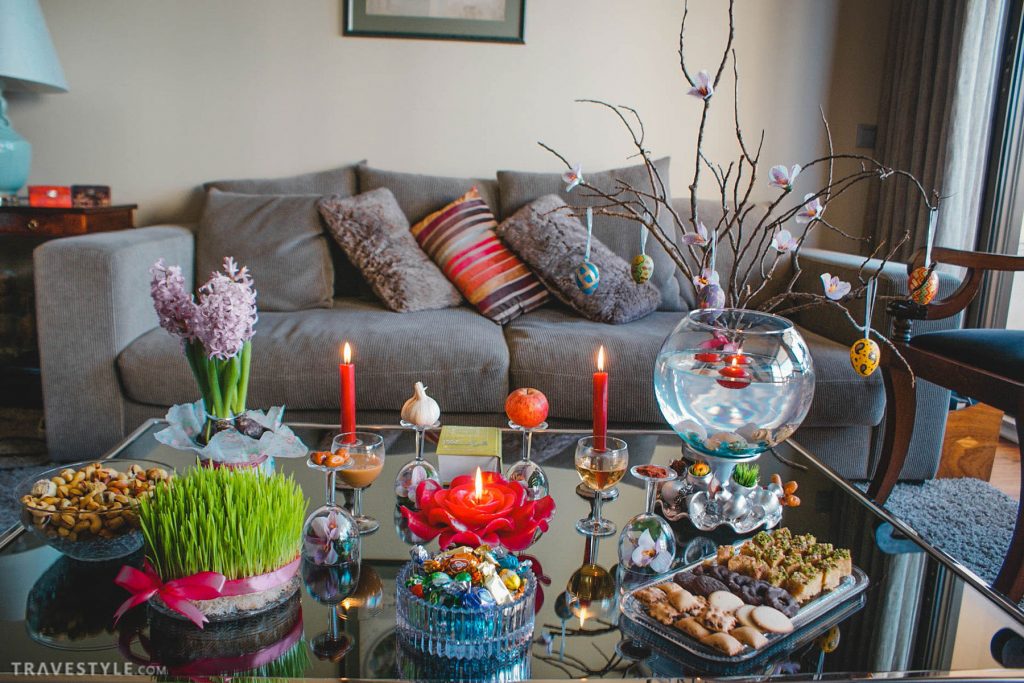
So what’s a Haft Seen table you may ask? Haft-Seen translates to 7 “S”s in Farsi. It’s basically a traditional spread with 7 items starting with the letter S in Persian. Each representing something different in our culture. Here are the 7 items of Haft Seen:
- Sabzeh: Sown wheat symbolizes the rebirth of nature.
- Samanu: Sweet pudding made of wheat sprouts symbolizes the sweet moments of life.
- Sib: Red apple symbolizes beauty.
- Senjed: Sweet silver berry symbolizes love.
- Sir: Garlic symbolizing health.
- Sumaq: The color of this Persian spice symbolizes the color of dawn prior to sunrise and the victory of light over darkness.
- Serkeh: Vinegar symbolizes old age and patience.
Among the crucial 7 “S”s, there are a few complimentary items such as:
- A Mirror: symbolizing light
- Candles: symbolizing the good light and divinity
- Coins: symbolizing wealth
- Goldfish: symbolizing life
- Hyacinth flowers: symbolizing a heavenly scent with the arrival of spring
- Painted eggs: symbolizing fertility and creation.
- And lots of sweets to eat!
Muslim or Zoroastrian families also put their holy book as a blessing on the Haft-seen table. You’re will probably find a book of poetry from Hafez or the Shahnameh on most tables as well.
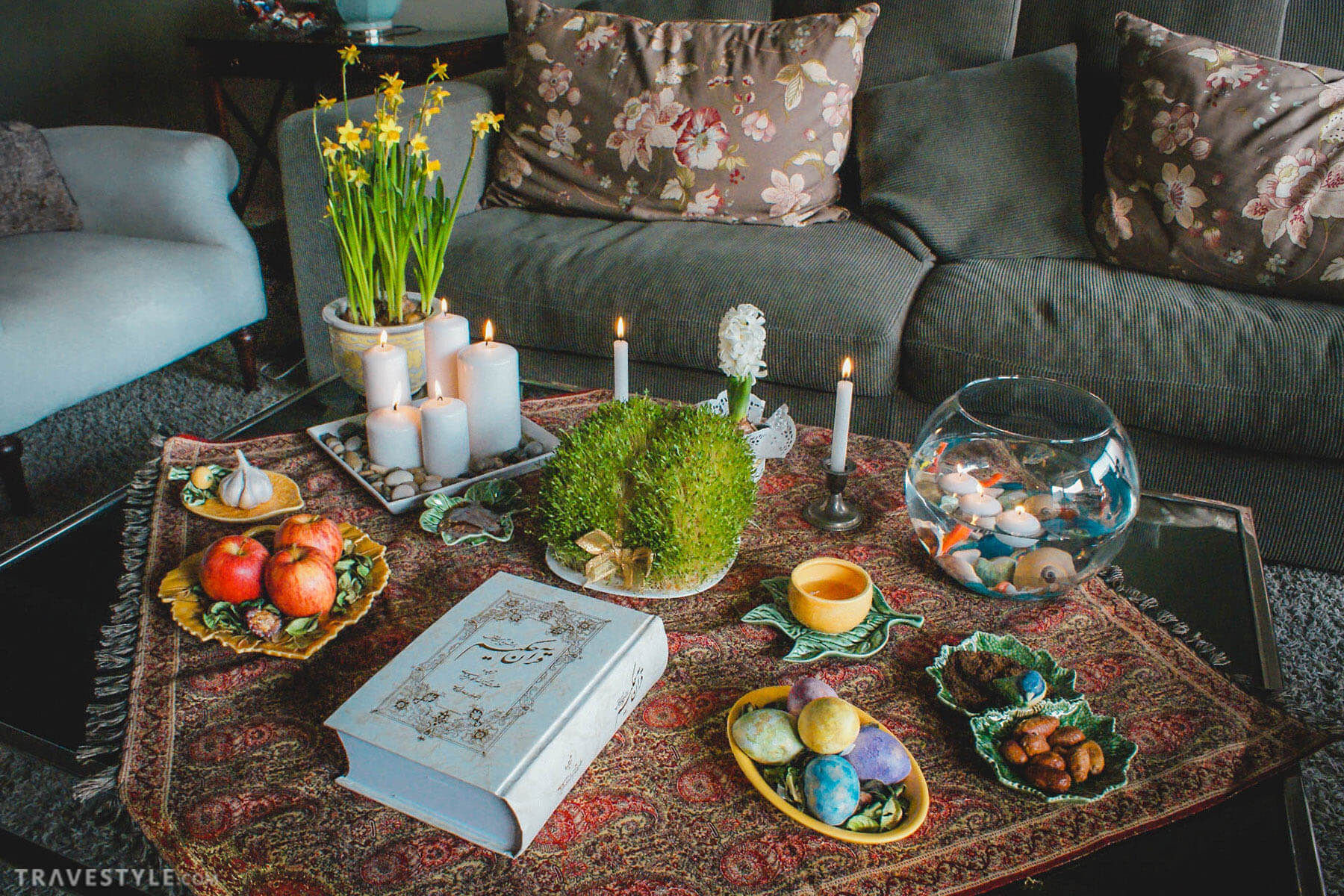
Haji Firuz
Haji Firuz is a famous traditional character dressed all in red who appears in the streets in the days before Nowruz playing his tambourine, singing songs and lifting up the Nowruz spirit. He’s pretty much like Santa Clause except that he’s not rich, nor fat and he’s black! While most Iranians only take Haji Firuz for his Nowruz jingle, his blackness is considered as racism by some academics and his character dating back to the times of black slavery in Iran. There are lots of debates on whether his black face is the result of fire or he’s actually black by race.
If you’re interested, I believe this article on Afro-Iranians will answer some of your questions.
The Day of Nowruz
Moments before the Persian new year, families gather around their tastefully decorated Haft Seen table and pray for goodwill in the upcoming year. As the clock strikes, we exchange kisses and Eidi (gifts) and take numerous pictures by the Haft Seen. Once we are done with all that we prepare for the Nowruz feast…
What do we eat for Nowruz?
Along with the fancy table and everything else, Nowruz is about two things: Family and food! It’s the worst time of the year to be on a diet, and gaining some extra weight is highly expected. On the first day of the new year, it’s customary to eat Sabzi Polo ba Mahi (herby rice with fish) which is always accompanied with the tastiest dish of Kuku Sabzi (Persian herb frittata).
Here’s a great recipe for Sabzi polo Mahi from one of my favourite Iranian food bloggers.
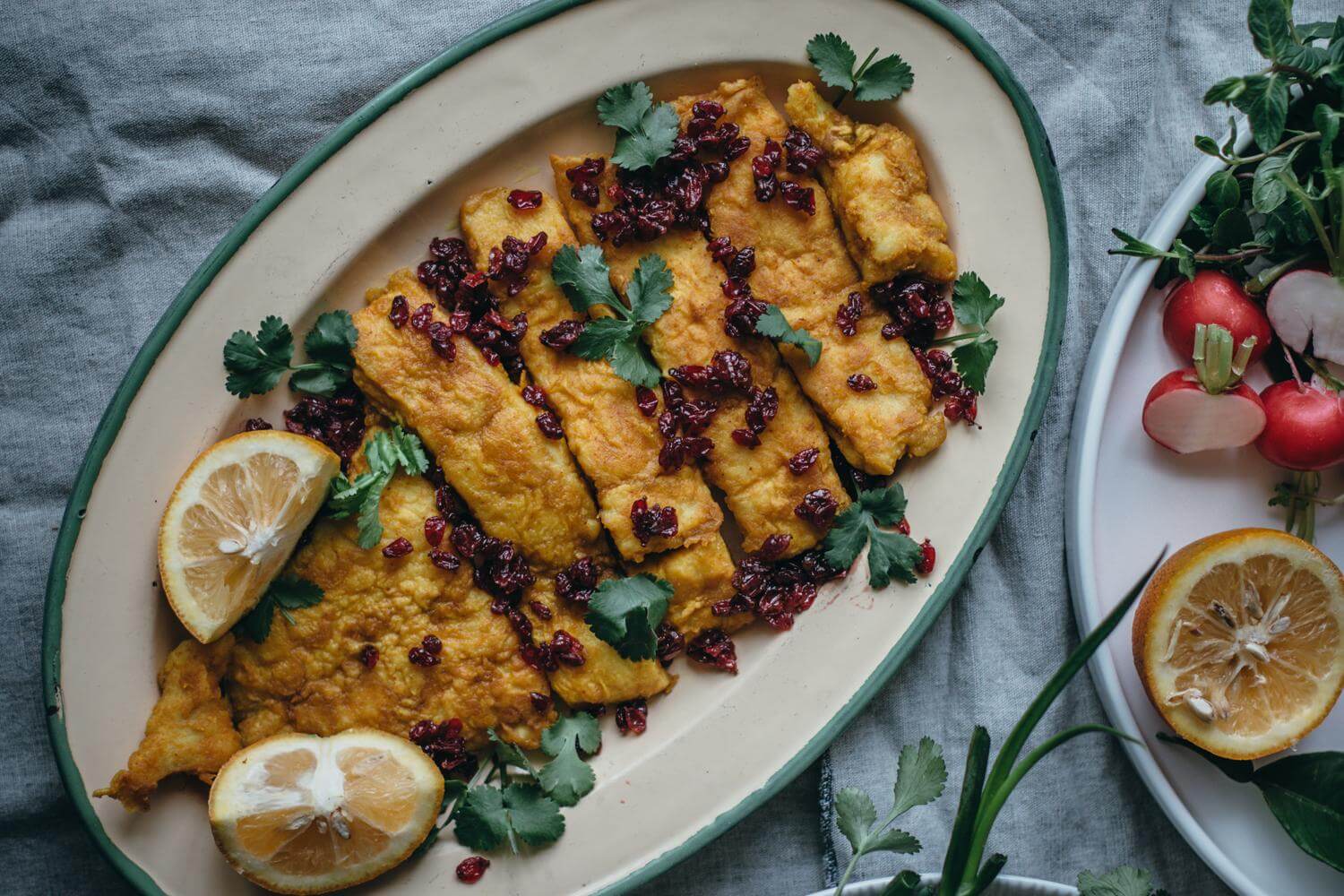
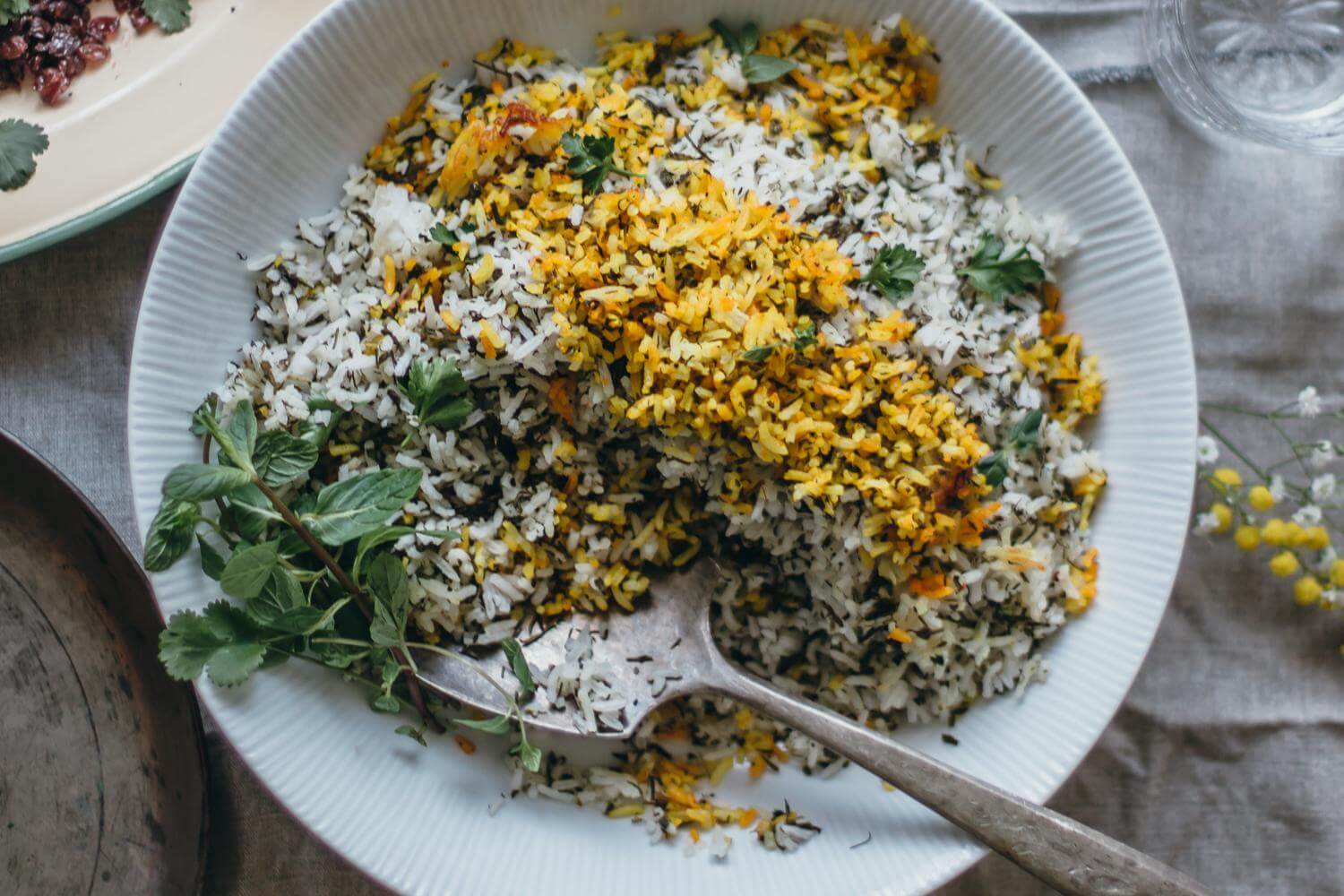
Check out this video to learn to cook the ultimate Kuku Sabzi. It’s my personal favourite!!
The Nowruz holidays last for 13 days. You’ve got 13 days to visit everybody and seeing them in somebody else’s house doesn’t count. You actually have to go to their house! People always start with the elderly or those who are have lost a loved one in the previous year. This is our way of helping them get over their grief and welcome the new spring without their loved one. You would then move on to the rest of your family.
The Persian new year is also the most popular time to travel for Iranians. This makes it the worst time for foreigners to visit Iran. It’s when transportation ticket prices rise and accommodations find an excuse to rip you off. Pretty much like Christmas elsewhere.
Sizdah Bedar | The 13th outdoors!
After 13 days of celebration and eating, we end Nowruz with even a bigger feast! The only difference is that it’s a picnic. Sizdah Bedar is basically the national picnic day in Iran. It’s officially named as the day of nature in our calendar. On this day we head outdoors, play games, grill the kebab and munch on the leftover nuts and sweets from all the parties. Parks are filled. City outskirts are packed and there’s an Iranian family sitting on every bunch of grass you may find.
Sizdah Bedar is also when we take our Sabzeh from the Haft Seen to throw it in flowing water. We believe that the Sabzeh placed on our Haft Seen table for 13 days has been gathering all the negative energy while growing, and letting it go in the water will remove the illness from our homes. Just before throwing the Sabzeh away, unmarried girls and boys knot the leaves wishing for a spouse to be found until the next Sizdah Bedar. I’ve actually never heard of it working!
Best places to spend Sizdah Bedar in Tehran:
As a child, we would always head to the big Mellat park for Sizdah Bedar. Things changed when my family lost their patience in finding a parking spot as they got older! Now we just go to the closest park to our home! But if you’re spending Sizdah Bedar in Tehran and want to see it in full swing, head to the big parks like Mellat, Laleh Park, Saai park, Chitgar or Goftegou.
Tips on visiting Iran during Nowruz
Nowruz is not the time to visit Iran if you’re looking to tick off attractions from your list without having to go through long lines and sharing the place with too many other visitors. But it’s a beautiful time to experience Nowruz itself. Tehran is usually the best place to be. Most Tehranis have left for the holiday. It’s the only time of the year when there’s hardly any traffic in the capital. If the weather’s fine, Tehran is likely to experience blue skies all throughout the 13 days.
Visiting Tajrish bazaar is also a must if you arrive a few days before Nowruz. It gets absolutely crazy but that’s what we love about it. Bazaars, in general, are a great place to witness the Nowruz in any city.
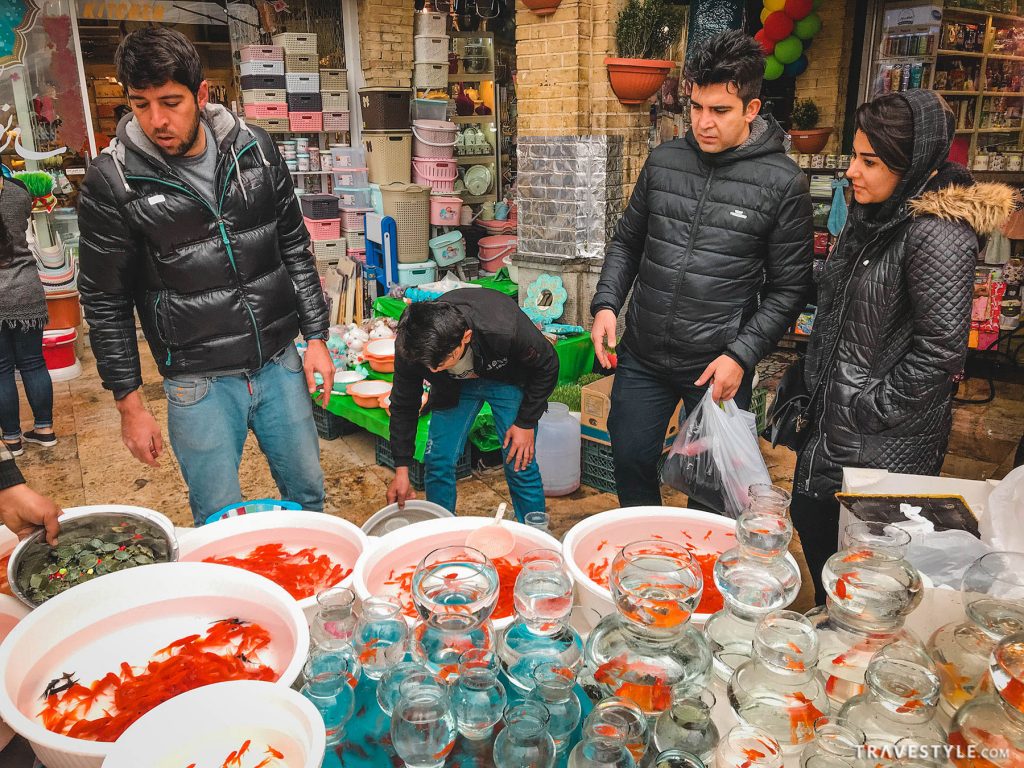
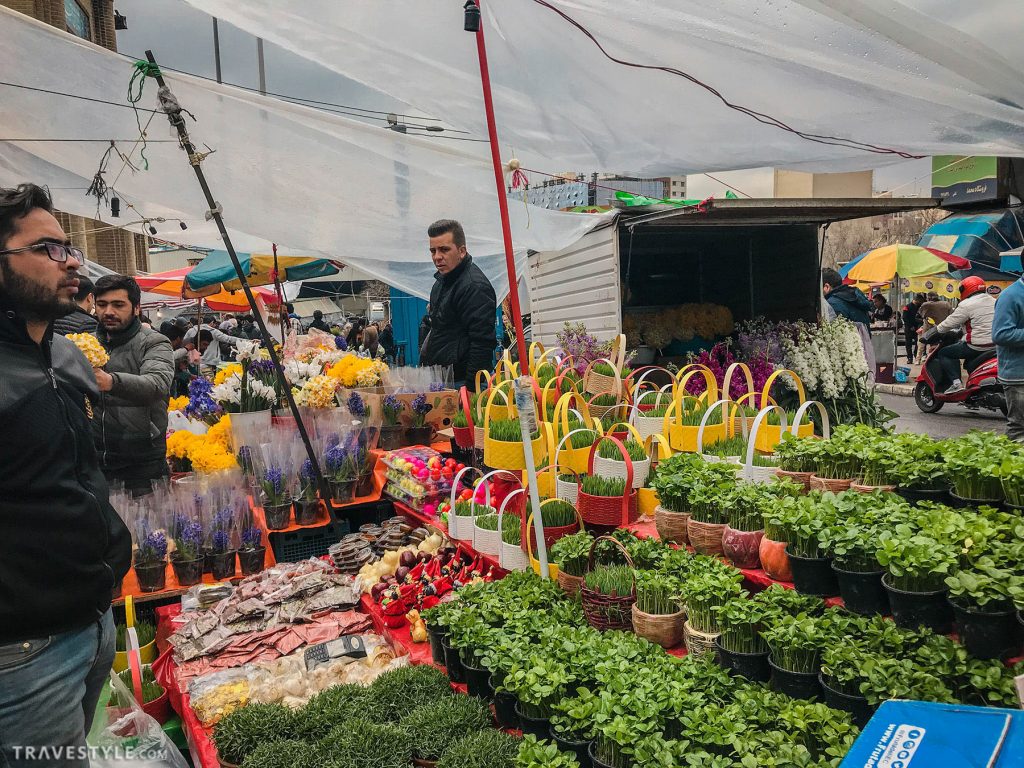
Beware that traffic gets mad as we get closer to Nowruz. It’s this time of the year that street vendors are allowed to sell almost everywhere. They conquer the city with their pile of goods and shout their prices at the top of their voice.
The Nowruz Playlist
We don’t really have anything like Christmas carols for Nowruz. But over the years there has always been some music that gets us in the Nowruz vibe. Here’s a playlist to get you started on Nowruz:
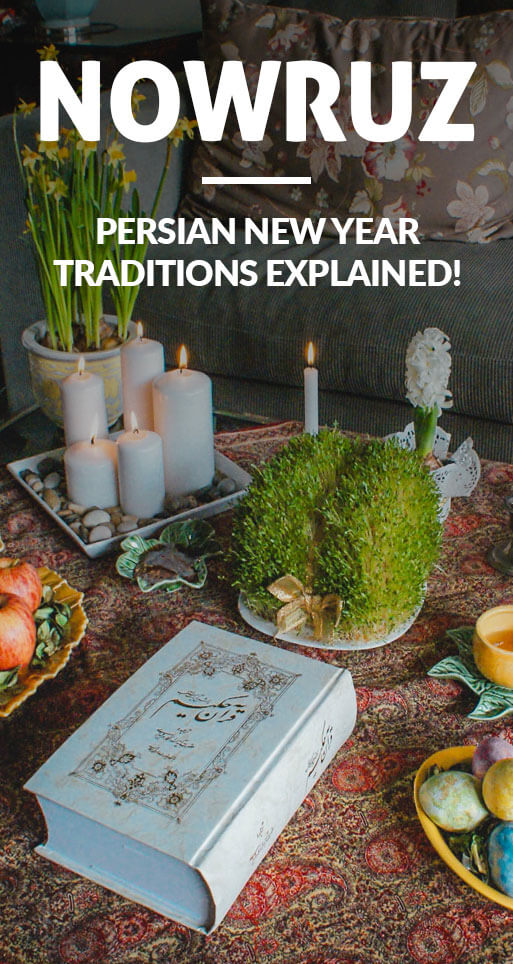


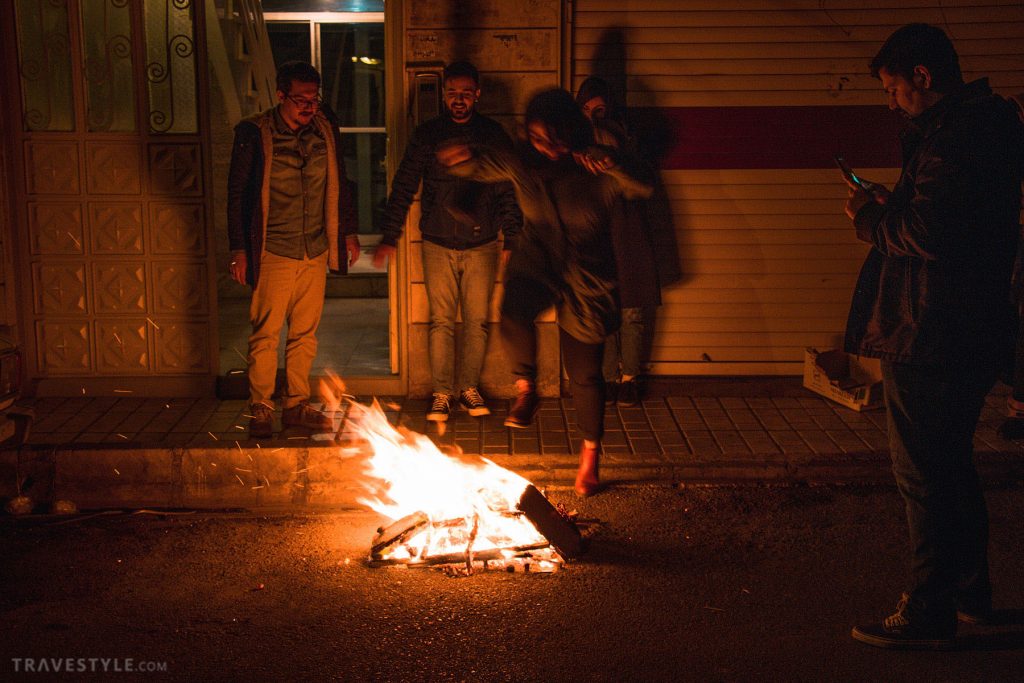
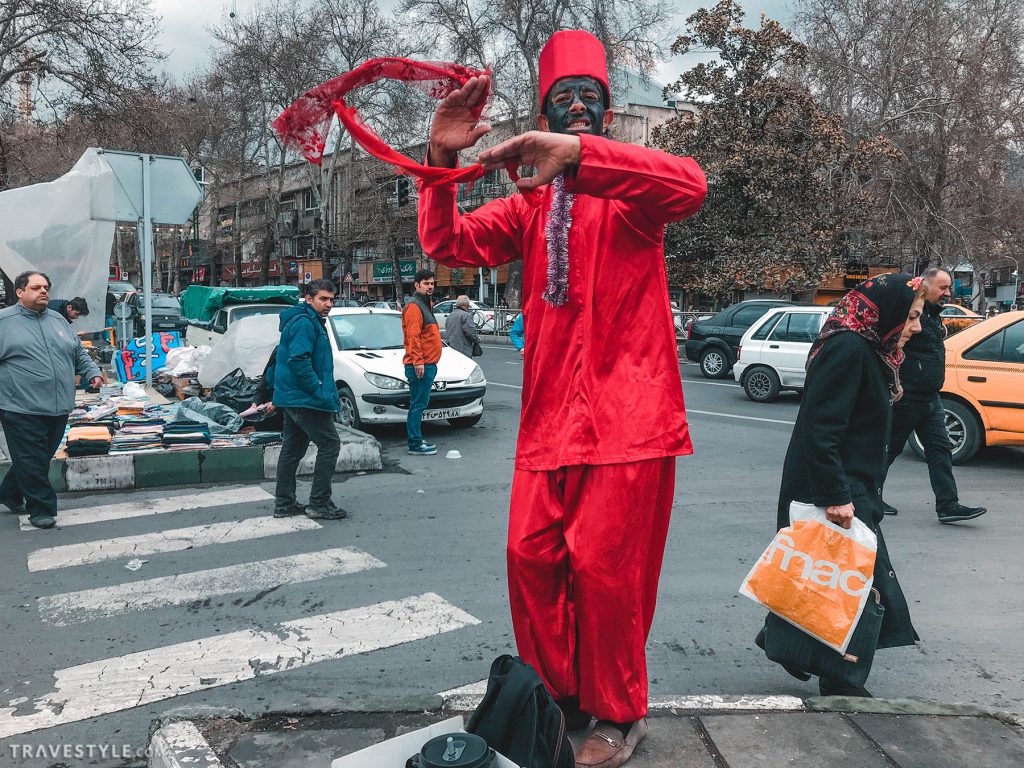
I am in Tehran today and tomorrow.I can check out the Tajrish bazaar but guess its a bit early to expect the Nowruz frenzy.
Don’t worry, I’m sure they’ve already started. It won’t be as crazy as the last days but there is certainly a Nowruz vibe there. 😉
This is an amazing guide to Nowruz, Matim, congratulations. Miss you and all my iranian friends 🙂
Thank you so much Filipe. I miss both you and Lisbon as well. 🙂 I need to bring my husband there.
This is awesome, Matin! Nowruz tradition well explained through a fascinating story.
Thank you so much Ali 🙂
I see Nowruz posts in my social media every year, especially haft seen table spreads, but never knew the deeper significance. This is a great explanation of everything!
Thank you Andrew. I’m glad you found it useful. 🙂
Beautiful article. We are Zoroastrians so we usually put the Avesta, a picture of Zarathustra and Farvahar on the Haft Sin table. We used to get a goldfish too when I was a child but haven’t in many years because I have cats. Best wishes for a wonderful Nowruz.
Thank you Helen. We’ve been avoiding the goldfish for many years now as well. 😉
Dear Matin
This was a very informative, interesting and well written article on Nowruz,
Brings back wonderful memories of my time spent last year, traversing the length and breath of your indescribably wonderful and hospitable country. Iran will always have a very special place in my heart.
Kheili Mamnoon! 🙂
Lakmali
Colombo, Sri Lanka
Dear Lakmali, Thank you for your sweet words. I’m so glad you’ve enjoyed your time in Iran. Hope you come back. 😉